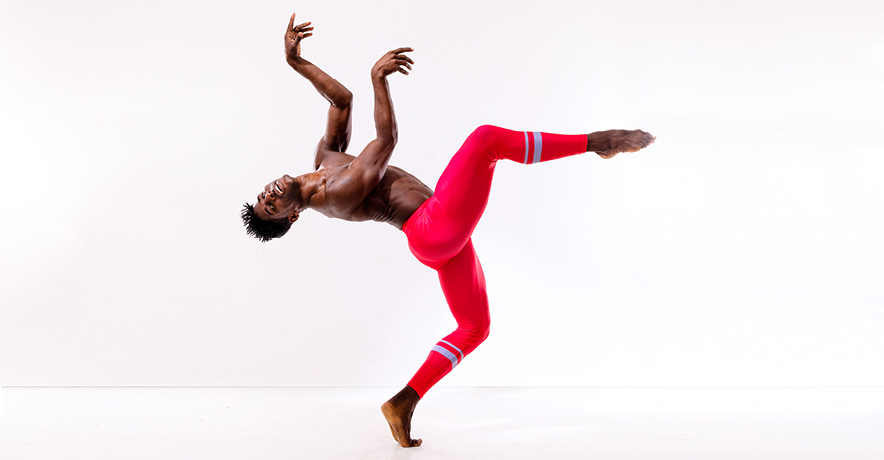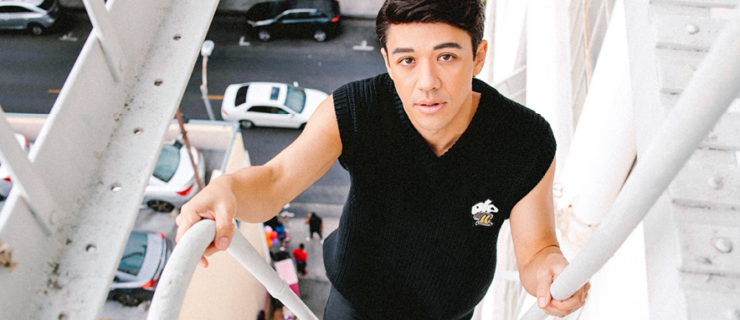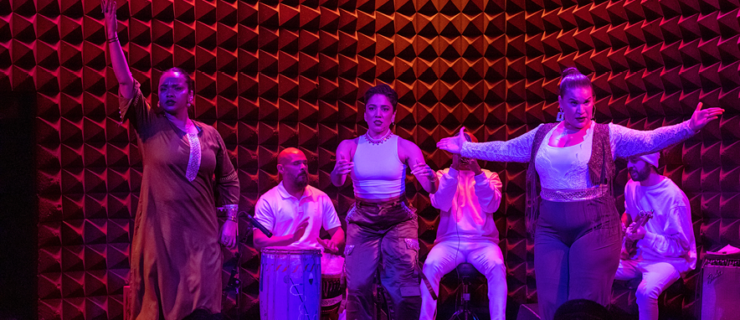Lloyd Knight Illuminates the Stage at Graham and Beyond
There are performances that stay seared in your brain. Lloyd Knight’s interpretation of Molissa Fenley’s marathon solo State of Darkness in 2021 was one of them. Over the course of 35 minutes, alone on the Joyce Theater stage, Knight appeared to pass through various physical and mental states, from the serenity of an eagle in flight to alarm and physical frenzy, and, finally, to a kind of bliss, beyond time and space. And through it all, he maintained a precision, purity and beauty of movement that spoke of transcendence and absolute physical control. It was both an out-of-body and a profoundly in-the-body experience.
Fenley created State of Darkness to Stravinsky’s The Rite of Spring in 1988. In 2020, during the pandemic, she brought it back to the stage, first for online distribution and then, in 2021, for live performance. Seven dancers performed the solo, all exceptional. But Knight’s interpretation felt transformational, like a kind of molting. “The experience changed me,” Knight says. “You go through a full journey, and by the end you feel like a completely different person.”
What had helped propel him to that state, he explains, was a mixture of his admiration for Fenley—“She’s so ballsy, and I wanted it to be that ballsy too”—and his hunger to fully experience everything the solo threw at him. “I wanted to push myself to the max,” he says, “in every way.” He worked and worked, until the piece became part of him. “I think what was special about him,” Fenley says, “is that he found something very new for himself in it. There was a sense of exploratory delight.”
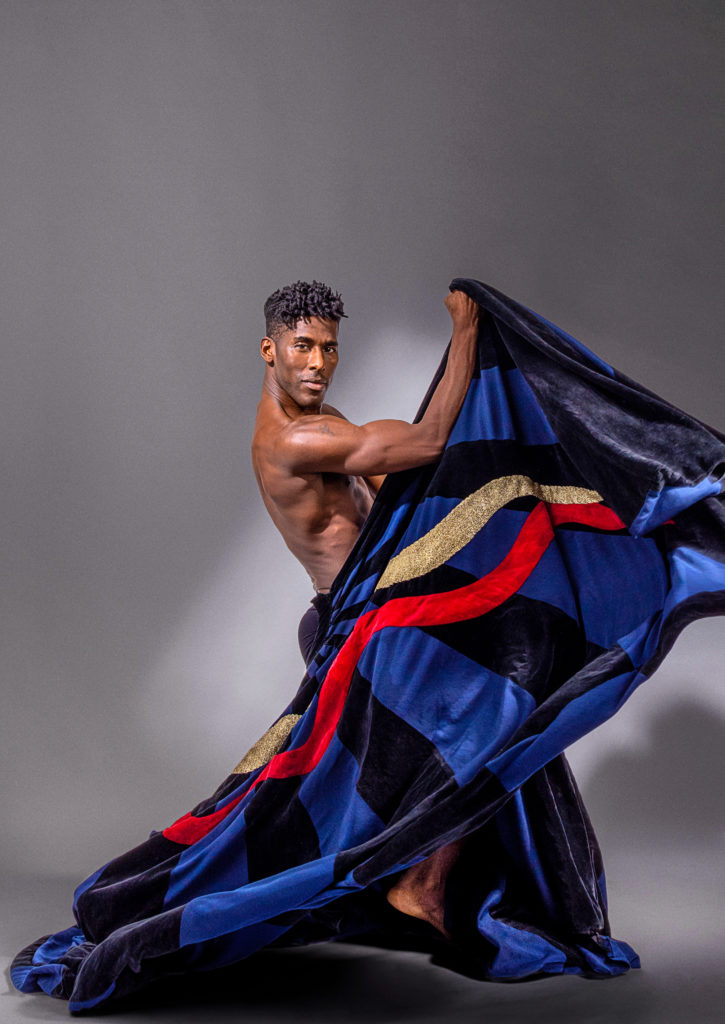
For the last 18 years, Knight has been a member of the Martha Graham Dance Company, where he has been a principal since 2014. And though he deeply loves the Graham repertory and technique, and has made strong impressions in many of Graham’s works, he is always looking for more. “I don’t want to be put in a box,” he says, “or to always have to move in a particular way, just because that’s how people see me. I want to be more than that.”
That hunger shines through his performances. In 2022, he collaborated with Twyla Tharp for the first time, on an evening made up of two of Tharp’s most celebrated and popular works: In the Upper Room, from 1986, and Nine Sinatra Songs, from 1982. Again, watching him dance, you could see joy radiating from him. Sweat poured down his chest, arms and back, but a smile crept across his face. “Dancing with him is just pure joy,” says Cassandra Trenary, who also danced on that program.
There’s a lot of preparation behind being that in the moment onstage; it’s something that Knight has worked toward his entire career. “Dance has always been demanding for me,” he says. “I always had to work hard, to fight for what I have.”
He developed this determination as a dance student, first in middle school and then at New World School of the Arts in Miami, where he spent his college years. Knight came to dance late—he’s now 40—with a few stops and starts on the way. His family, British and Jamaican, moved to Miami from London when he was 8 years old. As a kid, he liked to dance and sing with his cousins and watch old Shirley Temple and Sammy Davis Jr. films: “I just loved the music and the fantasy of it all.” Then, in his first year at Norland Middle School, a magnet arts school, one of his teachers noticed him, gave him an informal audition and invited him to join the school’s dance program.
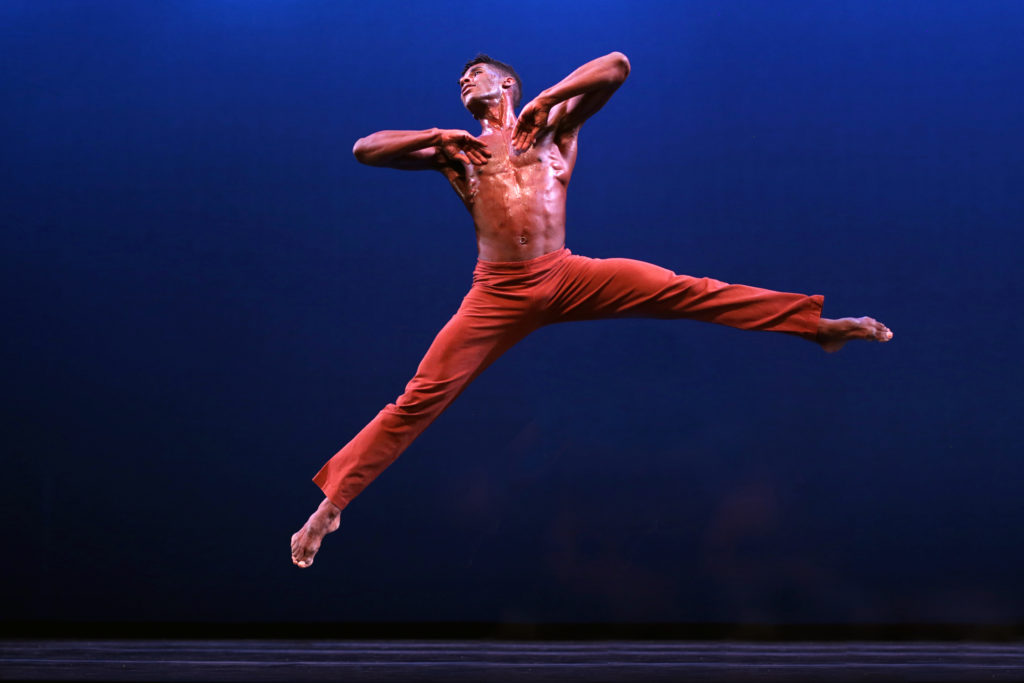
The other students had been taking dance for years. “There was a lot of catching up,” says Knight. “All my life I’ve been playing catch-up.” It was also something of an adjustment for his family. “There had never been a boy in the family who talked about wanting to be a dancer,” he says. “I had to take karate at the same time to balance things out and make my dad feel a little happier.”
Knight studied jazz, modern dance and ballet at Norland, but when he graduated and wasn’t accepted into a conservatory program, he moved on. He loved to draw and was intrigued by architecture, so he enrolled in the architecture program at William H. Turner Technical Arts High School.
But, as time went by, he started to miss dance. His architecture training, with its focus on computer graphics rather than actual drawing, began to lose its appeal. By his junior year, he had started taking dance classes on the side. One, a Graham class, was taught by Peter London, an African American dancer who was a member of the Martha Graham company from 1988 to 1997. (Graham created the role of the Shaman in Night Chant for him.) London became an important mentor. “To see a man of color, from the Caribbean, who had gone to Juilliard and become a principal at Martha Graham, was a great image of what hard work and determination looked like,” says Knight. “To see a man over 6′ 2″ demonstrating a whole Graham class full-out every day only made me more hungry to move in that way.”
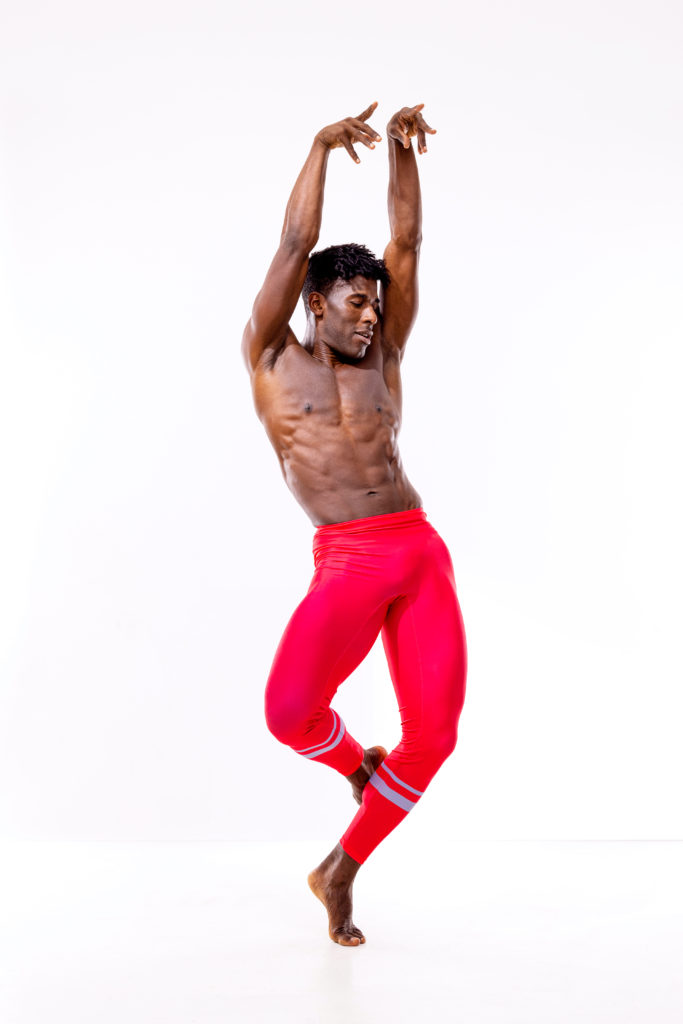
London was equally impressed with Knight. “I can remember him simply walking across the campus,” he says. “He had this singular focus.” Knight applied to the college dance program at New World School of the Arts, where London was on the faculty. He got in, and it was catch-up time all over again. Knight still remembers his blistering first evaluation. “All the teachers were sitting on one side of a long table, and I was in a chair in front of them.” Though the criticisms hurt, he says that the experience crystallized what he needed to do: take night and weekend classes, apply for summer programs, read everything he could, watch videos, dig deeper. So that’s what he did. “He was a guy with a mission, completely dedicated, constantly improving,” says London, who, in addition to his classes at New World, invited Knight to his evening classes at a school across town.
Drawn to ballet, Knight spent two summers studying with the Dance Theatre of Harlem. Arthur Mitchell, then still the director, would come in to watch class and rehearsal. “I loved seeing those Black artists doing Balanchine,” says Knight. “I loved the approach to the movement—it made sense on my body.” But by 2004, the year before Knight graduated from New World, the company had been forced to shut down (temporarily) because of financial problems. Knight was also attracted to Ailey’s choreography, but in the end it was the Graham technique that fascinated him the most. What drew him in was the completeness of Graham’s world—as he puts it, “the theatricality of it, the power and the costumes, the Noguchi sets and the movement. I felt like I was watching Shakespeare in dance form. I loved it. I wanted to do it.”
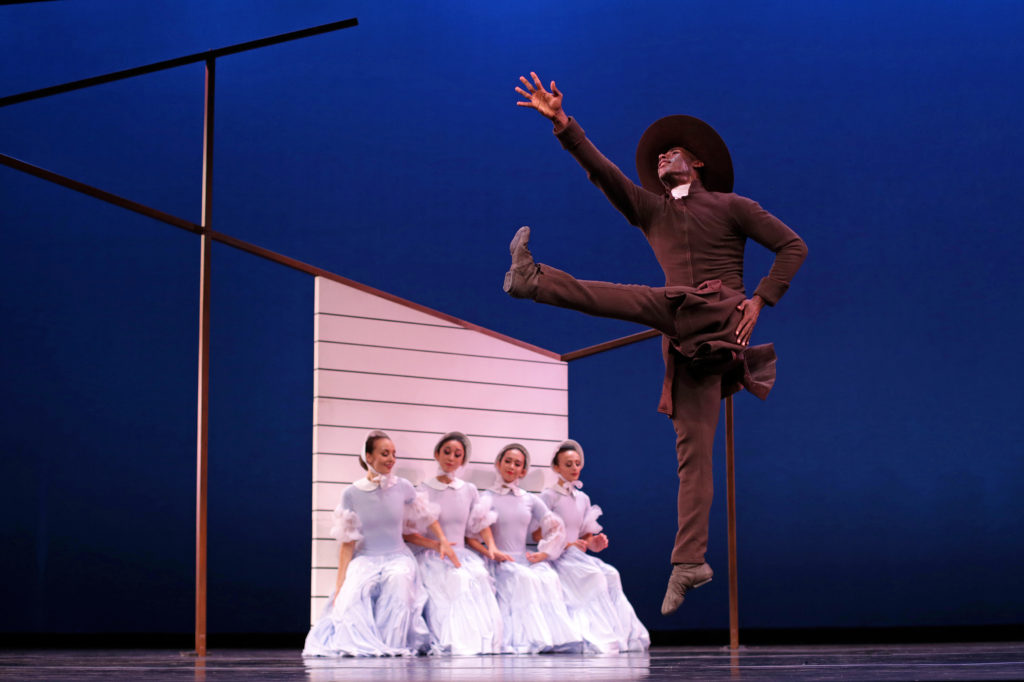
Knight joined the Martha Graham company in 2005, a tumultuous time not long after the company had emerged from an acrimonious and expensive lawsuit with Graham’s heir. The leadership had just transitioned from Terese Capucilli and Christine Dakin to current artistic director Janet Eilber. No sooner had Knight been hired, he had to be let go, for financial reasons, only to be rehired a few weeks later. “We had to rebuild from zero,” says Eilber, “and Lloyd was part of that.”
Eilber has watched Knight develop from a young dancer fueled by passion into the consummate artist he is today. “Each year, he got better and better, and now he is a fully developed artist,” she says. Knight stands out for distilling the movement to its essence, without overlaying it with extraneous theatricality. “He doesn’t add anything,” says London. “Everything gives way to simplicity, and that is very hard.”
Knight has performed many of Graham’s iconic male roles over the years: the Preacher in Appalachian Spring (created for Merce Cunningham when he was a member of the company), the seductive Stranger and Adam in Embattled Garden, Hippolytus in Phaedra, the Night Watchman and Paris in Clytemnestra, Oedipus in Night Journey. What he loves about these dance dramas is that they create a whole world onstage, in which he can lose himself. “Sometimes, when the curtain goes down, I think, My God, what just happened?” he says. “There’s nothing quite like it.”
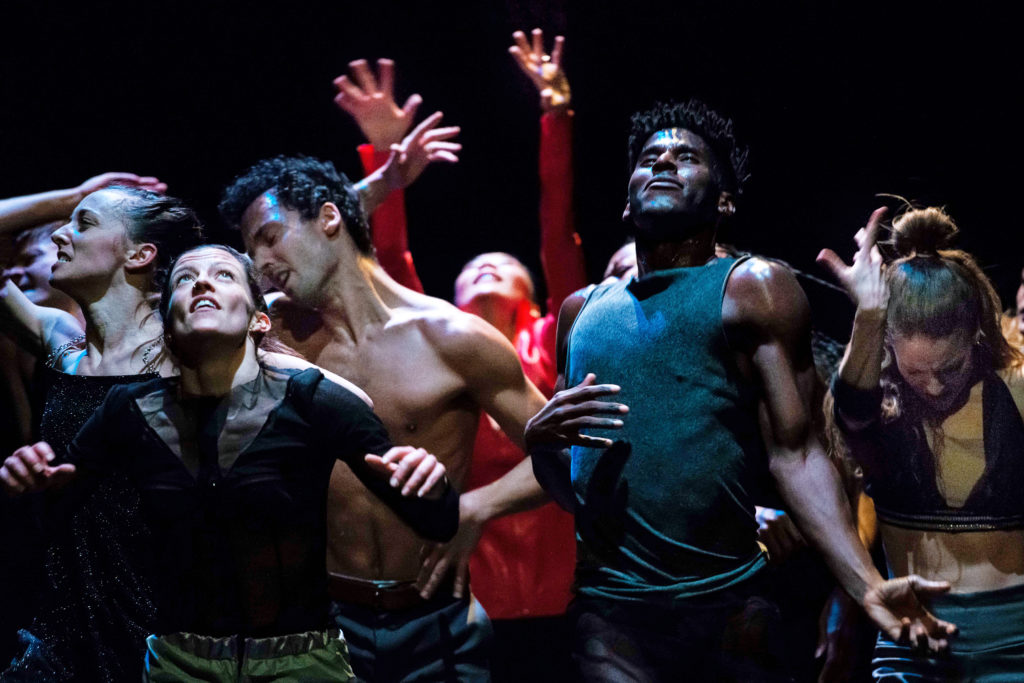
As Eilber has commissioned new works for the company, Knight has had opportunities to expand his horizons in many of them, such as in full-scale commissions from choreographers Nacho Duato, Mats Ek, Sidi Larbi Cherkaoui and, most recently, the Israeli-born, British-based choreographer Hofesh Shechter. In 2019, he spent four months as a guest principal with Ballet Flanders at Cherkaoui’s invitation. While there, he took part in a remounting of Cherkaoui’s 2006 Mea Culpa, which focused on the legacy of colonialism. It was the first time Knight had danced in a piece that overtly took on the topics of race and slavery. “It was heavy,” he says, “but I thought it was so brilliant, and he created an important depiction of interracial love that I hadn’t seen before in dance.”
Race is something Knight carries through everything he does. “It’s an important part of me,” he says. “I am a Black male, and that is something that is always with me.” He says that Peter London “always pushed me to carry myself with pride and reminded me that I not only represent myself, but every Black person.”
Being one of the few Black men at Graham (and sometimes the only one) has been lonely at times. “Only because, you realize there haven’t been that many of us,” says Knight. He says Black audience members have approached him after shows to tell him how much his presence means to them. He feels the honor of that, as well as a responsibility “to produce something really great.”
In his constant quest to grow and improve, Knight continues to train in multiple disciplines: Graham technique, of course, but also ballet, yoga, Gyrotonic, sometimes Gaga. He was a regular in Wilhelm Burmann’s class at Steps on Broadway until Burmann’s death in 2020, and he now takes class with Nancy Bielski, Heather Hawk, Espen Giljane and Zvi Gotheiner. Knight has also become close to dancers he’s met while working on projects, including both Cassandra Trenary and James Whiteside from American Ballet Theatre, and he remains connected with Jamar Roberts (until recently Alvin Ailey American Dance Theater’s resident choreographer), whom he knows from Miami.
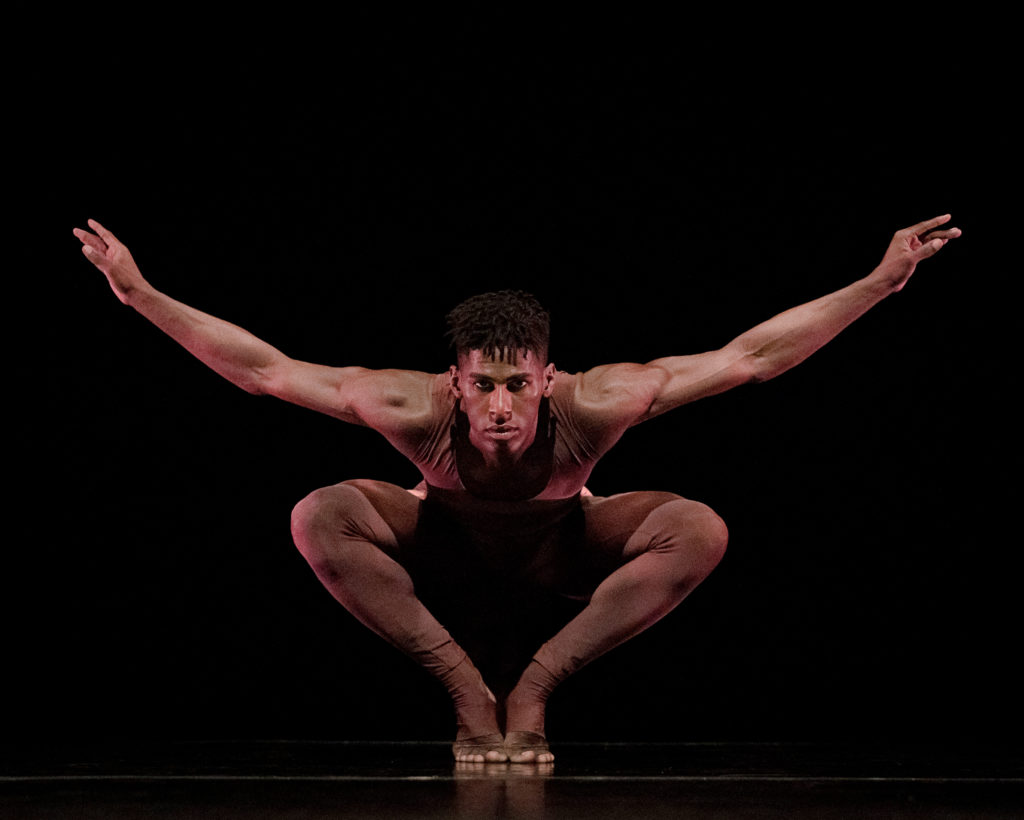
Because many of his friends are fellow artists, they often make work together. Knight collaborated with Jack Ferver, a downtown choreographer with a flair for the theatrical, in a work called Everything is Imaginable, in which Knight danced a very pure, Martha Graham-like solo while wearing a long, white dress, accompanied by the sound of Graham’s voice. The solo was embedded in an evening that explored the “lives, virtuosity, and fantasies” of its five queer performers. It was Knight’s first experience of overtly presenting himself as a gay artist onstage.
As usual, he was ready. All those years of hard work, of opening himself up to new experiences and absorbing as much as possible, have prepared Knight for this current moment, when he is more in demand as an artist than ever. There’s no more need for catch-up. Knight is right where he needs to be, at the center of the dance world, ready for anything.
